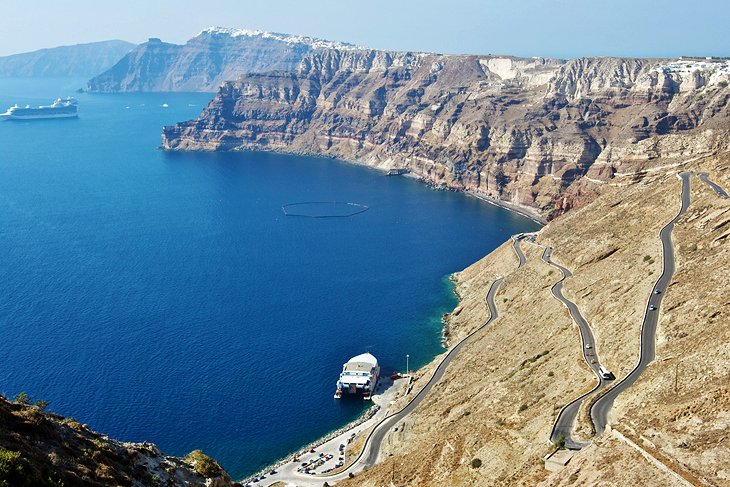Best Santorini holiday attractions right now? Oia is one of the most popular and picturesque towns on the island. An absolute must see during a trip to Santorini. It is located on the north-west edge of the island, at an altitude of 70 to 140 m a.s.l. (230 – 460 feet). Its characteristic white buildings stretch for about 1.5 km (1 mile) along the edge of the cliff over the Armenis Bay. From the west, Oia is adjacent to fishing village of Amoudi (Greek: Αμμουδίου). On its south there is a port village of Armeni (Greek: Αρμένη), on its east side Finikia (Greek Φοινικιά) and from the north Tholos (Greek: Θόλος). It is 12 km (7.5 miles) from the island’s capital Fira and 17 km (10.5 miles) from the airport. Read extra info at Oia Santorini.
The Museum of Prehistoric Thira displays finds from Akrotiri archaeological site in a modern white building located close to the 1950s Mitropolis church in Fira. One of the top tourist attractions is the Blue Monkeys wall fresco. Other ancient artworks on display include marble figurines, painted ceramics, tools, and weapons. Pyrgos was Santorini’s capital before Fira took over in 1800. The tiny village of Pyrgos, located in the middle of Santorini, is made up of whitewashed Cycladic cottages built around the ruins of a medieval hilltop castle. Previously a sleepy, all-but-forgotten town, Pyrgos has, since 2004, started to cater to upmarket tourism with the opening of several small, chic restaurants and boutique hotels.
Wine Tours are among the most popular activities in Santorini. The island is renowned for its excellent white wines, known as some of the best in Greece. You can visit many vineyards (known for being the oldest in the world!) on the island, and taste the best wines. If you’re interested in Santorini’s History, the ancient site of Akrotiri is one of the island’s best place to visit. This archaeological site is often compared to Pompeii, in Italy. Akrotiri is an ancient Minoan city destroyed by a volcanic eruption in 1,613 B.C. It was only rediscovered in 1967 during an archaeological excavation. The site is one of the most important in the Aegean Sea. The archaeological excavations are still on going in this very large site. Many remains are probably still undiscovered! In Akrotiri, wooden footbridges allow you to walk in the city. There, you will admire the ancient buildings, the streets and many ceramics. Unlike Pompeii, the city of Akrotiri was uninhabited when the eruption occurred, as no human remains or valuable objects were found on the site. What happened to these people? No one knows yet if they moved elsewhere on the island, or sailed to Crete.
Boat trips are among the best things to do in Santorini. The most famous tour is a 1-day cruise in the volcanic islands and Palea Kamini hot springs. During this day, you will explore the island of Nea Kameni and its still active volcano. You can even walk to the summit of the crater! You will also stop at Palea Kameni hot springs to take a dip. Then, you will end your day on Thirassia island, located right in front of Santorini. As these tours are very popular, you should really book yours in advance. It’s very easy, you just have to click on the button below to view the cruise details and book it. For only 37€ per person, you will get the bus transfer from and to your hotel, an audio guide, the cruise and the 3 stops at the volcano, the hot springs and Thirassia!
The capital of Santorini, Fira (Thira) is made up of whitewashed cubic houses and terraces, winding lanes, little squares, and blue-domed churches perched on the cliffs 300 meters above the caldera. From the small port of Skala, Fira can be reached either by walking or riding (mules are for hire) up the steep and winding stepped path (587 steps) or by taking the cable-car. It can also be reached from neighboring towns via the Fira to Oia scenic trail that takes you along the caldera cliff. Ferries dock at the port of Athinios, connected to Fira by road, while cruise ships put down anchor in the caldera, and passengers are transported to Skala by tender. Fira lives principally from tourism, and many of its buildings now serve as small hotels, apartments, restaurants, cafes, souvenir shops, and jewelers. See even more information at https://santorini-more.com/.
